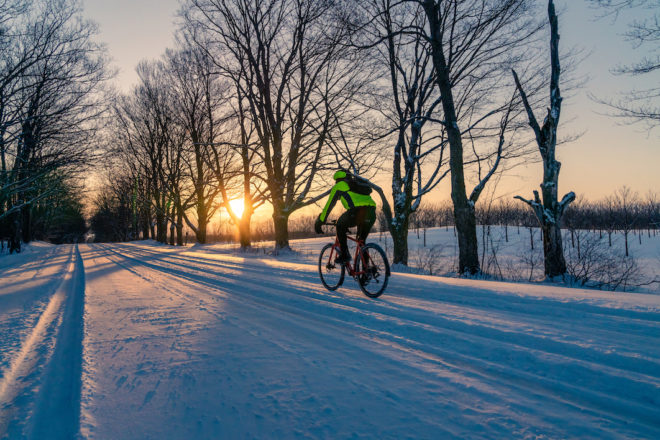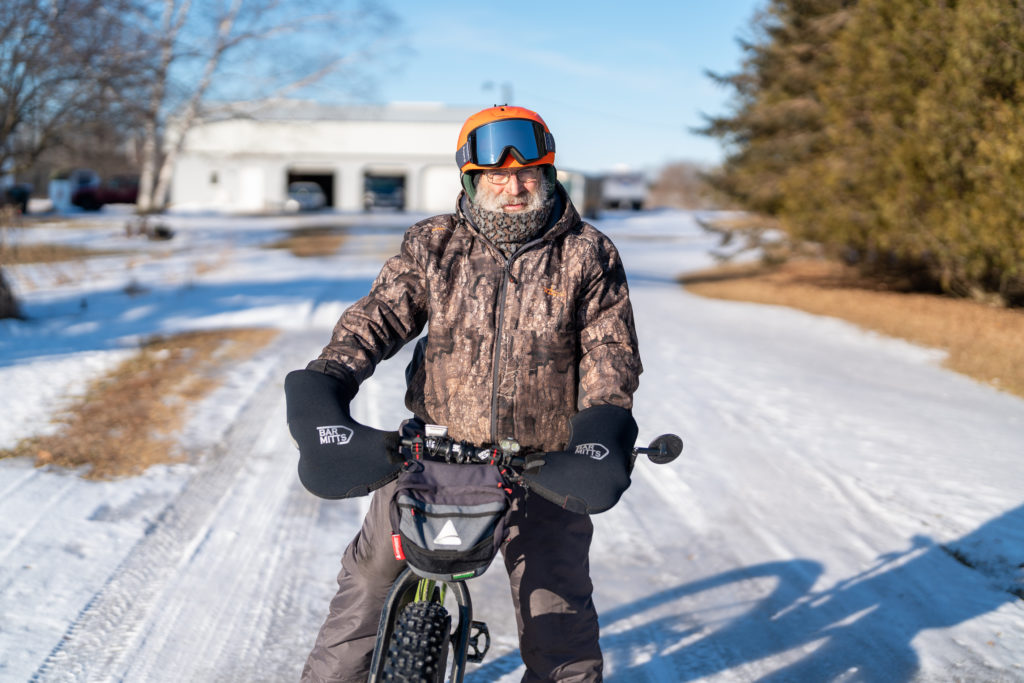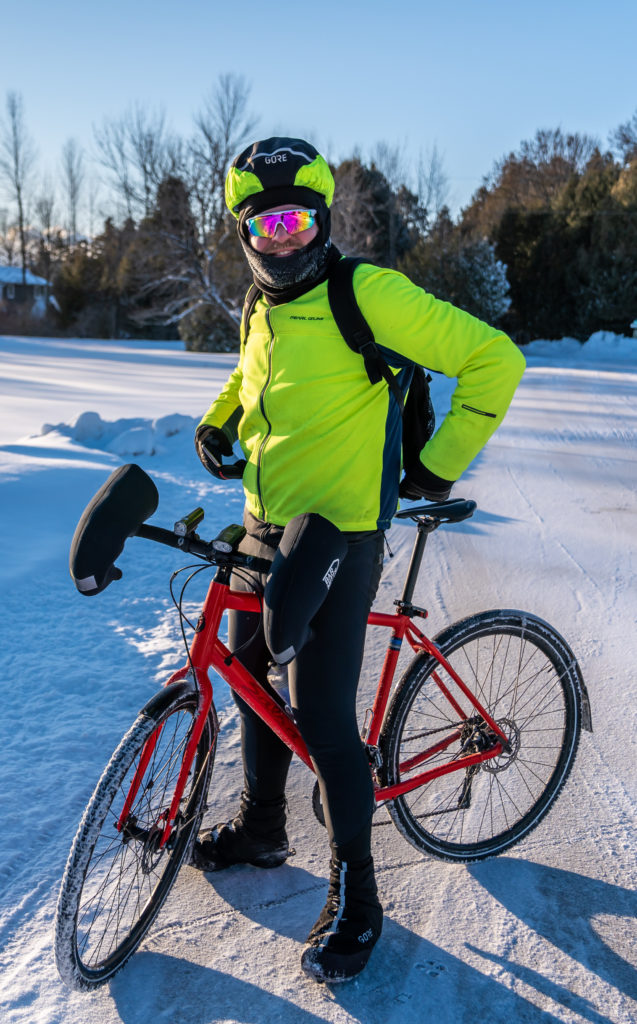The Commute: For these riders, cycling isn’t seasonal
- Share
- Tweet
- Pin
- Share

There’s a growing community of recreational cyclists in Door County, but few who make cycling a part of their regular commute – and even fewer still who dare to continue that commute through the snow, slush and ice of winter on a peninsula with few bike lanes and little signage.
But some of us are just built differently.
Take Carl Morrison. He’s been biking to work on a regular basis since the 1970s.
“It wasn’t the cool thing back then,” he said. “I just liked being active.”
At that time, he was working at Bay Shipbuilding, but for the past 20 years, he’s worked as a welder at ExacTech, to which he’s continued to commute by bike – first from his home in Sevastopol, and for the past year from his new residence in Forestville.
And Morrison is not a fair-weather rider. Nov. 26 will mark eight years of riding every single day. He’s 64, so that means he’s not doing it on entirely spry, young legs. He’s even biked through two knee replacements and a hip replacement without pause.

“Now for me, it’s like getting in your car to go somewhere,” Morrison said.
This year he rode the one-day, 230-mile Ride across Wisconsin from La Crosse to Green Bay with his daughter, Lisa.
“That was my favorite ride yet,” he said. “To spend 17 hours riding alone with my daughter – it was incredible.”
But Morrison’s daily commute is about 12 miles each way, or a little less if the Ahnapee Trail is clear. Most years he rides more than 10,000 miles.
“Make some kind of a plan, even if it’s just two times a week or three times a week,” he said. “You just have to start. Once you’re out there, you’re like, ‘Yeah, I can do this.’ You have to have ‘me’ time.”
Most of the year, Morrison rides a hybrid bike, but during the winter, he shifts to a fat bike with studded tires. And he’s not in a rush.

“Sometimes it takes me two hours to get home,” he said, “but I take a lot of pictures. I see blue herons, green herons, egrets, otters. I have a blast doing that. When you’re older, you take time to enjoy it. You’re not in a rush to do this other stuff. When you’re in a car, it’s a big deal to stop – you’re stopping traffic, you’re going fast. On a bike, it’s nothing to stop and take it in.”
Unlike Morrison, Nate Bell’s commute is part of a lifestyle transformation that began much more recently, during the early days of COVID-19, when the Sister Bay resident and village trustee was in the midst of a divorce and realized he needed to “reevaluate everything in my life.”
Bell got a bike and began to ride for exercise. A month later, he was riding the 12-14 miles to work at Door County Broadband in Baileys Harbor. Not only did he start losing weight, but he started down the path of becoming a cycling evangelist.
Brian Merkle at Nor Door Sport & Cyclery has helped to outfit Bell with the right gear, and he now rides 600-800 miles a month – almost 9,000 a year. As of October, he hadn’t missed a day of riding since March. At about 25 miles per day and $3.75 per gallon of gas, a full-time bike commute for Bell would save him $985 per year in gas.
His riding continues into winter on his Salsa Journeyman gravel bike, a routine that requires putting more purpose in the day. In addition to studded tires and fenders to maintain traction and keep his back from becoming a trail of mud and snow, winter commuting requires a thoughtful approach.
“You need to have a plan,” Bell said. “You need to think ahead and be purposeful in your actions. If you have to run home in the middle of the day, that’s 30 miles of riding. You don’t go places at the drop of a hat. You need to take a change of clothes and be able to dry your wet clothes.”
Now Bell chairs the Sister Bay ad hoc Outdoor Recreation and Transportation Committee, one of the major goals of which is to expand bike and pedestrian paths throughout the village.
“I’d like to not be the outlier who can travel by bike,” he said. “You have to be somewhat unhinged to go out and bike around up here, so we need the infrastructure. We need paths. We need bike racks that are accessible and in the right places.”
Then maybe a winter bike commute won’t seem so extreme.

